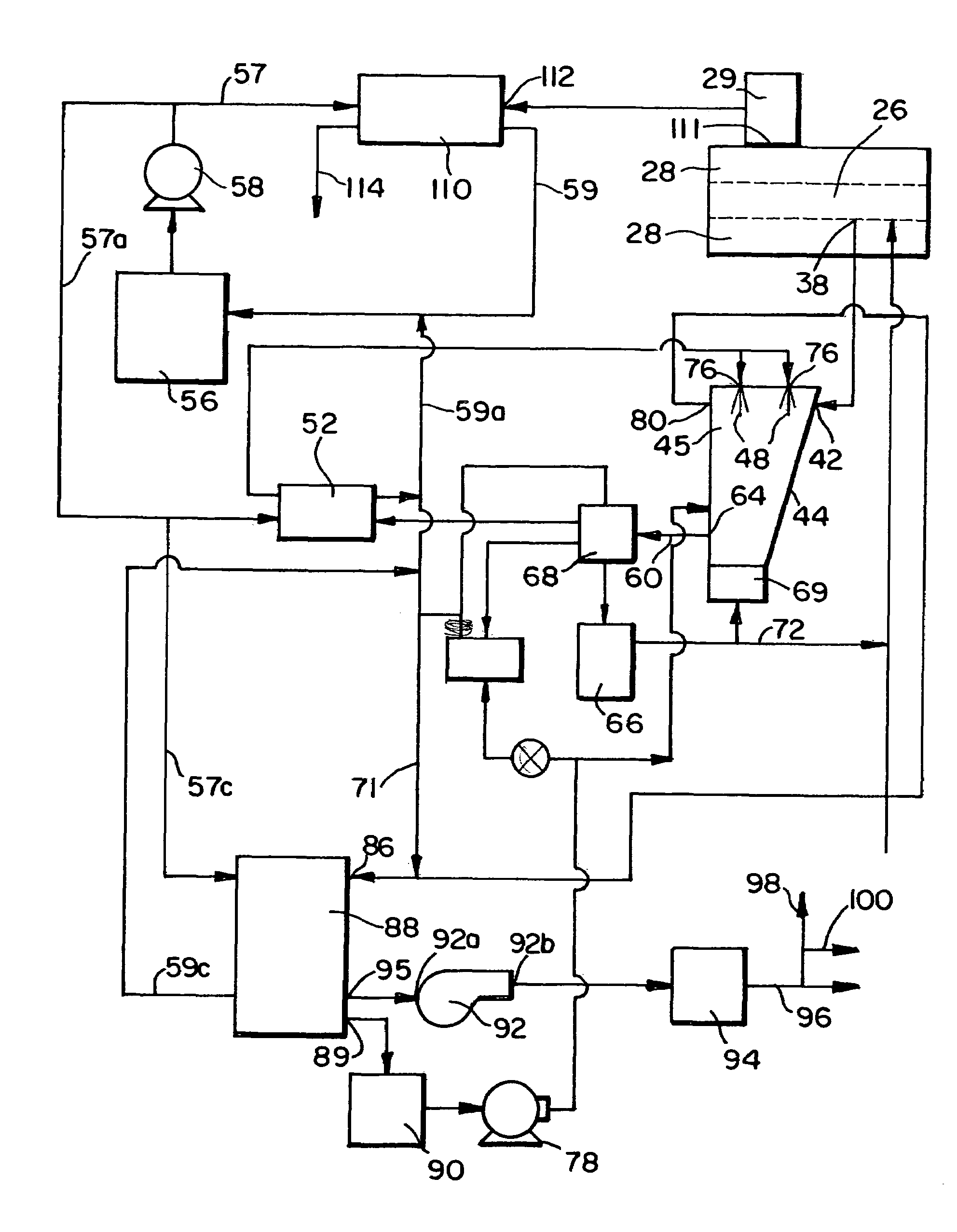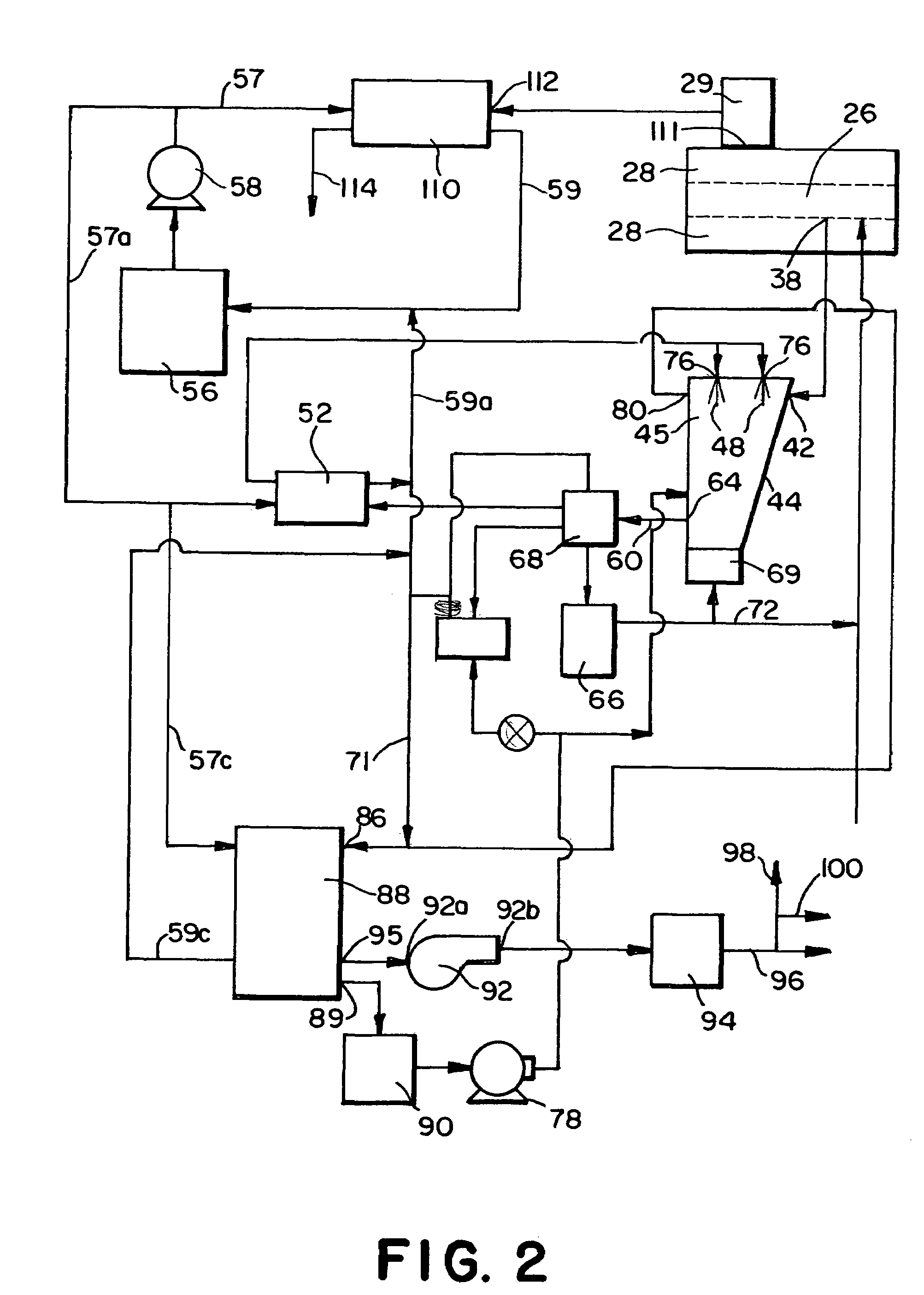Apparatus for pyrolyzing tire shreds and tire pyrolysis systems
a technology of pyrolysis system and tire shred, which is applied in the direction of lighting and heating apparatus, furnaces, muffle furnaces, etc., can solve the problems of burying tires, air pollution, and millions of tires every year
- Summary
- Abstract
- Description
- Claims
- Application Information
AI Technical Summary
Benefits of technology
Problems solved by technology
Method used
Image
Examples
example 1
[0069]Tire shreds of a maximum largest dimension of about 2 inches were fed at a rate of about 450 kg / hr to an inlet of a pin auger pyrolysis reactor heated using a firebox temperature of 980° C. The gas used in the firebox is pyrolytic gas taken from the outlet of a final condenser after passing through an oil separator and a final water-cooled condenser and then being further refined using a cyclone separator to remove particulates from the pyrolytic gas. The oil separator included oil sprayers for removing particulate in the hydrocarbon containing gas stream. The elements of the gases within the pyrolytic gas are shown below in Table 1. The composition of the effluent gas is also shown in Table 1 after burning. The effluent gas was cooled and passed into a cooling auger as described below. “ND” in Table 1 indicates a non-detectible amount of less than 0.001% by volume.
[0070]
TABLE 1PyrolyticEffluentGasesGas (vol. %)Gas (vol. %)Nitrogen1.9372.0+Oxygen0.459.0Carbon Dioxide6.05.5Carb...
PUM
| Property | Measurement | Unit |
|---|---|---|
| thickness | aaaaa | aaaaa |
| temperature | aaaaa | aaaaa |
| temperature | aaaaa | aaaaa |
Abstract
Description
Claims
Application Information
 Login to View More
Login to View More - R&D
- Intellectual Property
- Life Sciences
- Materials
- Tech Scout
- Unparalleled Data Quality
- Higher Quality Content
- 60% Fewer Hallucinations
Browse by: Latest US Patents, China's latest patents, Technical Efficacy Thesaurus, Application Domain, Technology Topic, Popular Technical Reports.
© 2025 PatSnap. All rights reserved.Legal|Privacy policy|Modern Slavery Act Transparency Statement|Sitemap|About US| Contact US: help@patsnap.com



